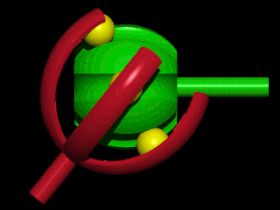Most of the time you are driving, there is no difference in sound between straight roads, curves, or corners. But occasionally you will begin to hear unfamiliar whining, squealing, clunking, creaking, or popping sounds when you take corners. Does not seem right.
Driving a curve or turning a corner requires the perfect coordination of dozens of parts–some of them relatively static, some moving rapidly. It can be a little daunting to try to determine where the noise is coming from, what might be causing it, and how to fix it.
This list will give you some of the more common noise-making culprits, what types of sounds you may hear when you are turning, and some of the possible repairs to consider.

What Parts to Check When Hearing Turning Noise
The different sounds you can hear when turning your vehicle can be made by different parts. You will also hear different sounds at different speeds. Here is a bit of a road map to help guide your diagnoses.
Low Speed Turns
Noise that is more apparent at low speeds generally points to suspension or power steering pump problems.
- Clunking, Popping, or Creaking. At low speeds, these noises quite often point to worn out or broken suspension joints. You are hearing metal on metal sounds.
- Whining. If the whining noise is coming from the front of the motor, check the power steering first. Quite often it is easy to hear if you listen with the hood open and someone turning the wheel at the same time.
Normal Speed Turns
Screeching, squealing, and whining noises while turning at normal speed usually are signs of damaged parts in the power steering system. A couple of the easier fixes are a loose belt or low power steering fluid.
If the belt is tight and the fluid is up, you will have to look closer at the rest of the steering system. Including ball joints, tie rod ends, rack and pinion–and everything connected to them like hoses, and hose connection.
High Speed Turns
- Crunching or Clicking. Crunching or clicking sounds almost invariably mean there are CV Joint problems (CV is Constant Velocity). (Note: Crunching or clicking noises when turning at high speed may also mean a differential problem–especially if the noise is coming from the rear of the vehicle.) For more information on differentials please see our article How to Fix a Differential: The Causes and How to Diagnose.
- Humming. Humming while turning at higher speeds is quite often a wheel bearing problem. Wheel bearings cannot be fixed. They need to be replaced to stop the noise, prevent damage, and to make the vehicle safe.
8 Parts That Could be Noisy When Turning
The following list contains some of the more likely noise-making parts of your vehicle.
1) Power Steering Pump
Power steering pumps are closed systems that make steering easy. But they can have problems. Check the fluid regularly. Power steering systems do not use up the fluid, so if the reservoir is low, there is a leak.
- Low on Fluid. A power steering pump that is low on fluid makes a sound all its own–kind of like a cross between a low pitched moan and a squeal. It also makes turning–specially at low speeds–an adventure in muscle power. Low fluid means you have a leak in the system that needs to be fixed soon. Usually the leak is from a hose or fittings, but occasionally the pump housing can be cracked. Fix the leak early because the longer you wait, the harder it is to find and the more damage you will do to the pump motor. (Re-filling the reservoir will get you home or to the repair shop.)
- Loose Belt. Occasionally the tensioner on your serpentine belt will break, leaving the belt too loose to turn the power steering pump at speed. (Of course, if the belt is not tight, you have more problems than just the power steering pump.) Replacing the tensioner–and possibly the belt–will solve the problem.
- Wearing Out. Power steering pumps will wear out eventually–sooner if they have been running low on fluid regularly. They are usually fairly easy to access and replace. (Make sure you check the pulley before ordering because most new pumps do not come with a new pulley. If yours is damaged, you will have to order a new one.)
For more information please see our article Power Steering Pump Noise: A Helpful Guide to How to Diagnose and Fix.
2) 4 Wheel Drive Engaged
Slow tight turns on dry pavement with the 4-wheel drive engaged can make you think that the entire front end is about to fall off. Specially from a red light or stop sign. Your vehicle tends to groan, scrape, skip, and crunch. None of this is particularly damaging to the vehicle–just annoying that you forgot to turn it off.
The reason for all this angst coming from the vehicle front end is that roughly 60% of power is directed to the rear wheels and 40% to the front. Meaning that the rear is pushing more than the front is pulling.
The fixes for this problem are simple and easy. Disengage the 4 wheel drive (which is a little tough in older vehicles that have to be moving), or straighten out the wheels as much as possible.
3) Worn Struts and Shocks
Front struts are an integral part of the steering mechanism. Strut mounts can become worn or loose over time, causing groaning and creaking type noises. You might also feel a bouncy or loose feeling when driving or turning.
Struts and shocks provide vehicle stability and a smoother ride. Getting the struts and/or mounts replaced is not only better for the ride but can become a safety issue. Strut replacement may not be for every one, but the average backyard mechanic should be able to accomplish it fairly easily. Replace both front struts at the same time. If you are in doubt, have a good mechanic do the job for you.
For more information about struts please see our article How to Quiet Noisy Strut Mounts.
4) Worn Ball Joints

Picture of Ball Joint from Wikipedia – Ball Joints
Ball Joints are designed to resemble your hip joint–allowing movement in multiple directions at the same time. They are used in virtually every automobile made. Ball joints allow steering, suspension, and wheels to operate together smoothly.
Worn ball joints produce a creaking noise when the wheels are turning that will get louder as the amount of wear increases. You will also experience vibrations in the steering wheel and feel a looseness in the steering.
Most factory-installed ball joints are sealed units which do not allow for lubrication that could extend their useful life.
Note: Replace worn ball joints immediately. If there is too much wear the ball may come out of the housing, which results in immediate loss of control of the vehicle.
5) Worn, Loose, or Damaged Tie Rod Ends/Boots
Worn or wearing tie rods will make a knocking or clunking sound as you turn. Tie rods are designed to keep the front end suspension solid. So torn rubber boots and wear and tear will likely also make the steering loose, and the vehicle can start shaking while in motion. This could start at speeds as low as 20 miles per hour.
Putting off tie rod end replacement will lead to shorter tire life (because of uneven wear), and loss of front end alignment. If the wear is allowed to progress too far your vehicle will begin to drift left and right making it tough to stay between the lines.
Replace them as soon as you find out they are in bad shape. Quite often tie rod ends and ball joints should be replaced at the same time. Leaving a partially worn part to save money will only cost more in the long run because it will shorten the life of the new piece.
6) Worn or Broken Front Wheel Bearing
Worn or broken wheel bearings cause a rumbling noise which may be noticed at one speed, then disappear at another, then come back. It could also make a whirring sound when turning and grinding or grating sounds at higher speeds.
Along with the rumbling sound, you will likely feel vibrations at speed and when turning and braking.
Wheel bearings are kind of important. Replace them as soon as you have diagnosed them as the problem. A wheel bearing seizing at 60 miles per hour could turn catastrophic.
For more information please see our articles Why is My Car Making a Knocking Noise? and Why are My Brakes Making a Grinding Noise?
7) Power Steering Rack and Pinion
The good news is that these last a long time before wearing out. The bad news is that when they do, they are expensive to repair. Unless you are absolutely certain that rack and pinion are making your turning noise, check out the other possibilities first.
The power steering rack and pinion is the part of the steering system that converts the steering wheel motion into side to side motion to turn the front wheels. When it starts to wear out you will hear a soft whining noise when turning. Specially at lower speeds and tighter corners. It may also start banging after the turn is made.
Your rack and pinion is attached to the power steering pump which supplies it with oil. As it wears out the rack will likely start leaking making power steering fluid top ups a regular occurrence. You may also smell burning power steering fluid.
Before deciding to take rack and pinion replacement on yourself, you may want to take a look at this YouTube video to see what you are up against.
8) Steering Column Problems
The steering column is an assembly that connects the steering wheel to the rest of the turning system so the driver can control the direction of the vehicle. It is more complicated that the old ones, and is collapsible for safety so it will not pin the driver to her or his seat in case of an accident.
If you start hearing a squealing noise that sounds like it is coming from the steering wheel you may have a worn steering column bearing, or the steering column has expanded or moved enough that it is rubbing on the plastic cover behind the steering wheel–making a rubber on plastic rubbing sound.
Lubricating the upper bearing with spray lithium grease could quiet down the problem temporarily. But you will eventually have to pull the steering wheel and replace the bearing.
Other Front End Problems
Here are a few other possible noise-causing problems.
- Snow, Ice, or Mud Build-Up. A rumbling sound that seems to pass through the entire vehicle when you are turning could just be a build-up of ice or mud at certain times of the year. It is well worth kicking off any built-up gack behind the wheels.
- Sway Bar. A knocking noise combined with poor handling when you turn is very likely caused by the sway bar wearing out.
- Constant Velocity Joints. CV joints are most often found in front-wheel drive vehicles. If you start hearing a crunching sound when steering at high speeds, these are the likely problem.
 Animated CV Joint from Wikipedia
Animated CV Joint from Wikipedia
Take it to a Repair Shop
If your DIY tool kit consists of vice grips, a hammer, and a bent screw driver, none of these repairs are going to look very appealing. Take your vehicle to a competent repair shop, and get it fixed right and quickly. You should get a quote before the work begins and a warranty when it is done.
Even if you plan on doing the repairs yourself, you may want to have a shop do a little diagnosing for you. This should pinpoint the problems and save you from potentially buying and changing the wrong part.
The shop may not be too happy telling you what to repair, but in the back of their minds, they are convinced you will screw it up and be back.
Don’t Wait Too Long
The longer you wait to fix the turning noise problem, the more money it will cost to get it done. Obviously worn parts don’t repair themselves, but the wearing seems to accelerate once it starts. Because lubrication does not work as well making it more abrasive, etc.
Not to mention that you will be driving with a potentially dangerous situation for a longer period of time. Some parts failing while you are moving are annoying. Some, like bearings seizing up or ball joints coming apart can be catastrophic.

